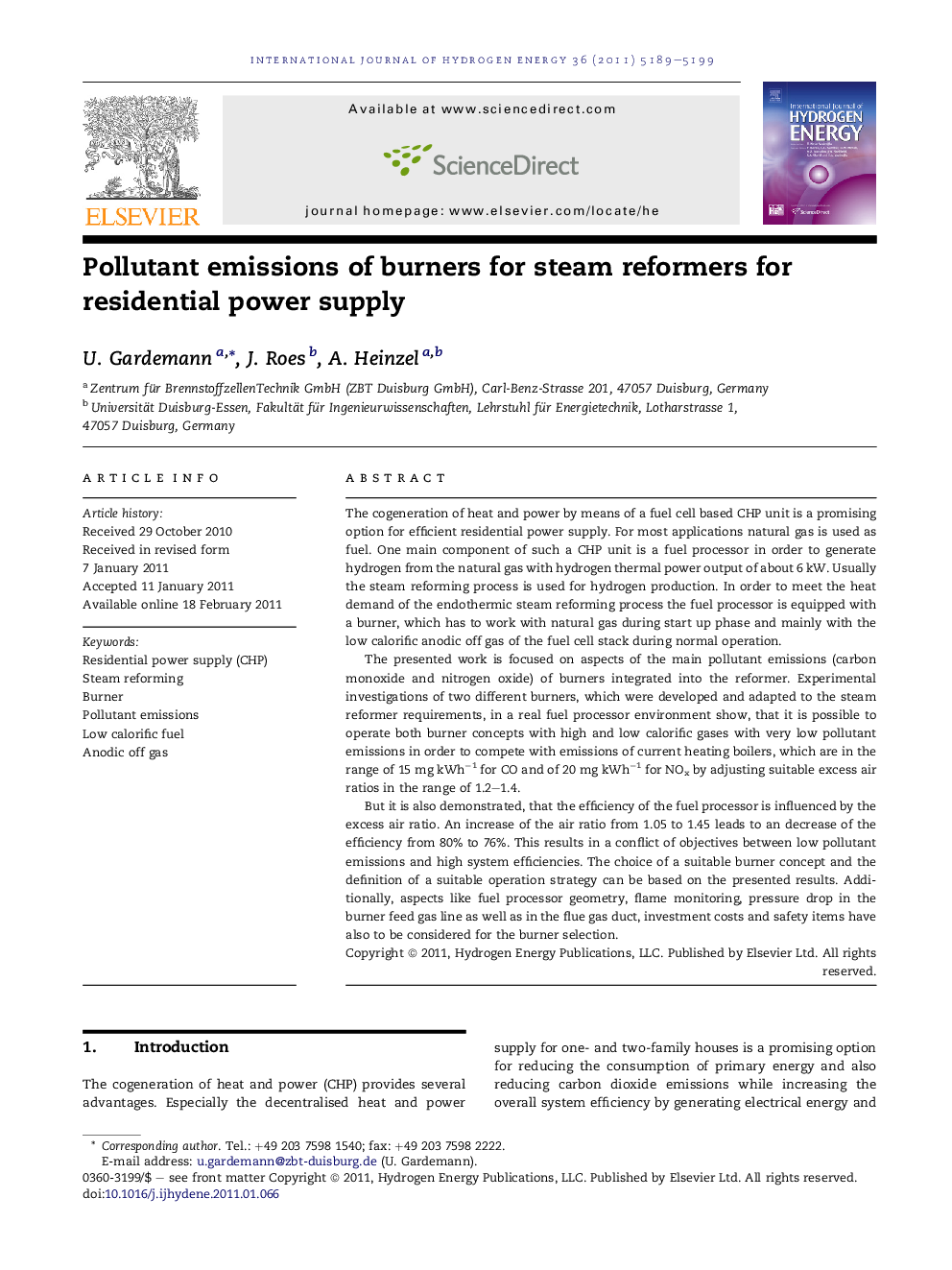| Article ID | Journal | Published Year | Pages | File Type |
|---|---|---|---|---|
| 1279827 | International Journal of Hydrogen Energy | 2011 | 11 Pages |
The cogeneration of heat and power by means of a fuel cell based CHP unit is a promising option for efficient residential power supply. For most applications natural gas is used as fuel. One main component of such a CHP unit is a fuel processor in order to generate hydrogen from the natural gas with hydrogen thermal power output of about 6 kW. Usually the steam reforming process is used for hydrogen production. In order to meet the heat demand of the endothermic steam reforming process the fuel processor is equipped with a burner, which has to work with natural gas during start up phase and mainly with the low calorific anodic off gas of the fuel cell stack during normal operation.The presented work is focused on aspects of the main pollutant emissions (carbon monoxide and nitrogen oxide) of burners integrated into the reformer. Experimental investigations of two different burners, which were developed and adapted to the steam reformer requirements, in a real fuel processor environment show, that it is possible to operate both burner concepts with high and low calorific gases with very low pollutant emissions in order to compete with emissions of current heating boilers, which are in the range of 15 mg kWh−1 for CO and of 20 mg kWh−1 for NOx by adjusting suitable excess air ratios in the range of 1.2–1.4.But it is also demonstrated, that the efficiency of the fuel processor is influenced by the excess air ratio. An increase of the air ratio from 1.05 to 1.45 leads to an decrease of the efficiency from 80% to 76%. This results in a conflict of objectives between low pollutant emissions and high system efficiencies. The choice of a suitable burner concept and the definition of a suitable operation strategy can be based on the presented results. Additionally, aspects like fuel processor geometry, flame monitoring, pressure drop in the burner feed gas line as well as in the flue gas duct, investment costs and safety items have also to be considered for the burner selection.
► Two burners were developed for the application in a fuel cell based CHP unit. ► Both burners showed successful operation with low and high calorific gases. ► The pollutant emissions can be adjusted by setting an appropriate excess air ratio. ► A Metal fiber burner concept is most suitable for low emissions and high efficiency.
